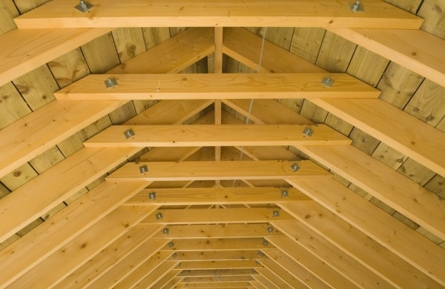
When discussing mold issues in the home, focus often is on bathrooms and basements. However, attic mold can be a huge problem if ignored. Mold in the attic can develop for a variety of reasons. The mold remediation experts at ServiceMaster Restore have tackled some of the toughest attic mold projects and have the expertise remove the mold from your attic.
Why is There Mold in the Attic?
We know homeowners not only want to know how to get rid of mold in attic spaces but also want to knowwhy mold is growing in the attic. The first step in any mold remediation process is to determine what is causing the mold. The most common causes for mold in the attic are:
- Roof leakage
- Siding or window leakage
- Poor ventilation
- Insufficient insulation or poorly installed insulation
- Poor or incorrect venting from the home's bathroom(s), kitchen and/or clothes dryer
When there's insufficient ventilation or the home's venting has been installed incorrectly, the warm, moist air from the bathroom(s), kitchen and clothes dryer will rise up and into the attic. This warm, moist air mixes with the cooler attic air (in the colder months) and can create a condensation issue that can lead to mold.
How to Remove Mold in Attic Spaces
Mold can't be removed completely until the moisture problem has been corrected. You can clean up the space so there are no visible traces of mold, but if the moisture problem is ignored, the mold will come back.
Any time you have mold growing under the attic sheathing, especially with a sloped attic space, it can be extremely difficult to clean due to the space limitations. There are the temperature extremes to deal with in the attic (super hot in summer, frigid in winter), plus the other challenges of working in an unfinished space. For finished attics, the challenges may include difficulty finding the cause of the mold issue or tracking down hidden mold living behind drywall and insulation. These are reasons why mold in attic removal is best left to the professionals.
Mold remediation process
After the roof leak has been fixed or the ventilation system repaired, the process of mold remediation can begin. If the attic space is used as storage, items need to be removed and all boxes and their contents inspected for mold. Discard any moldy boxes and have items affected by mold or items with that musty smell professionally cleaned.
The area needs to be sealed off for cleaning. Cleaning may include disinfecting moldy areas, the running of dehumidifiers, and a thorough drying of the space to deter any further mold growth. In some cases a mold-inhibiting solution may be sprayed onto attic sheathing to prohibit any additional mold development.
Before you attempt to tackle attic mold on your own, talk to the professionals at ServiceMaster Restore. We can take a look at the situation and customize an attic mold remediation plan just for your home.
0 Response to "How To Get Rid Of Mold In Attic"
Post a Comment